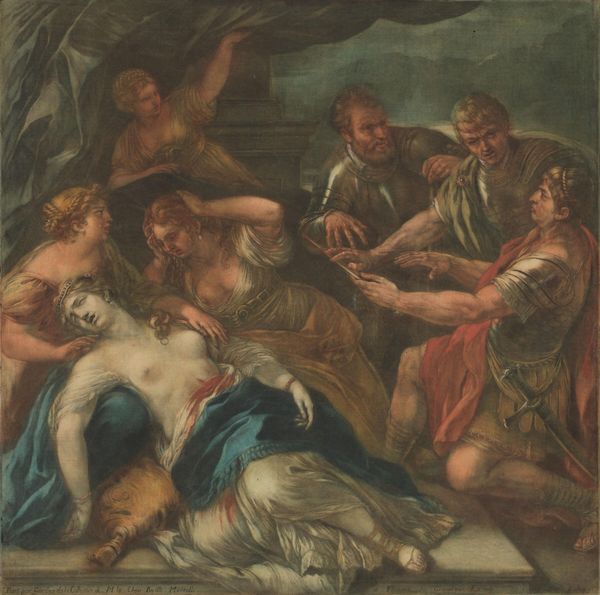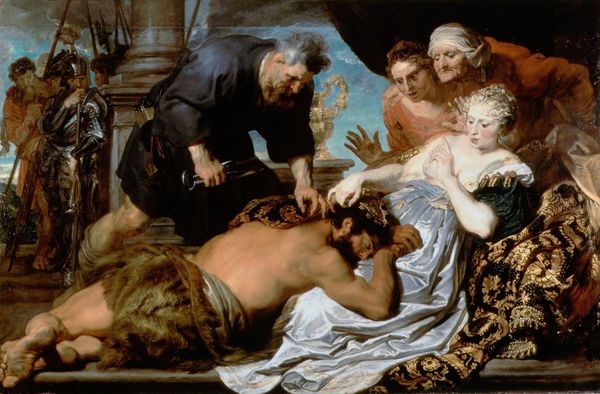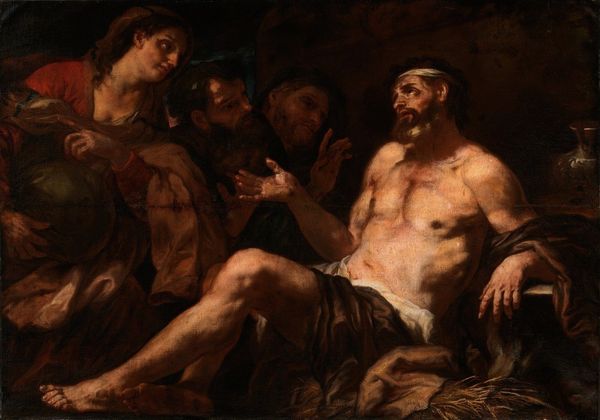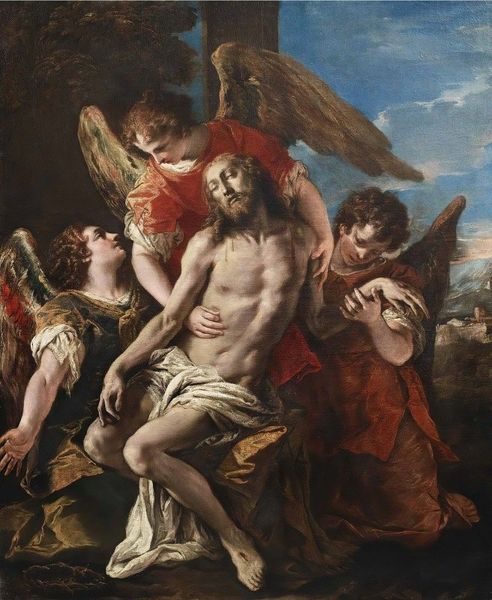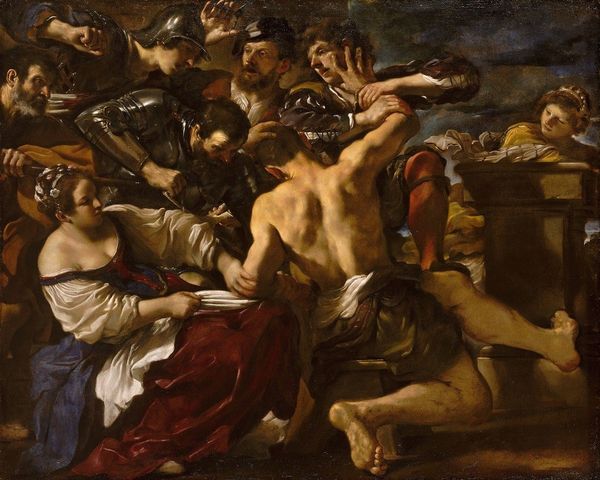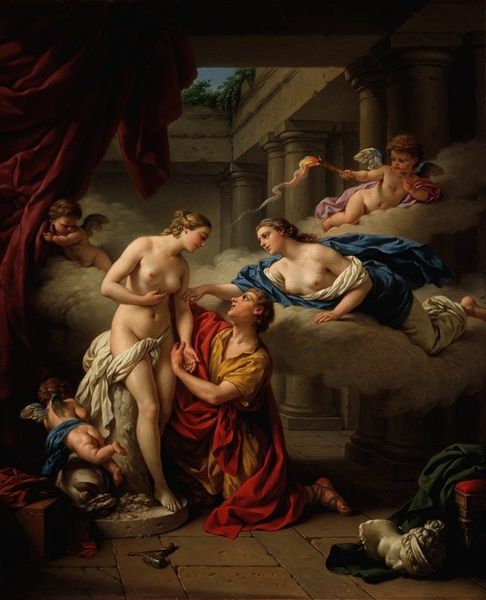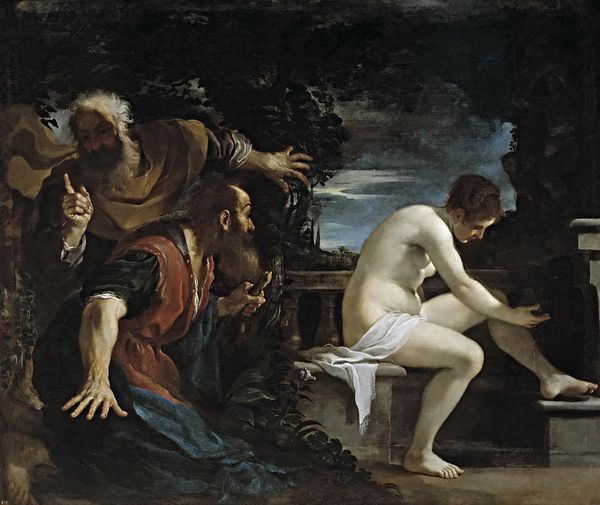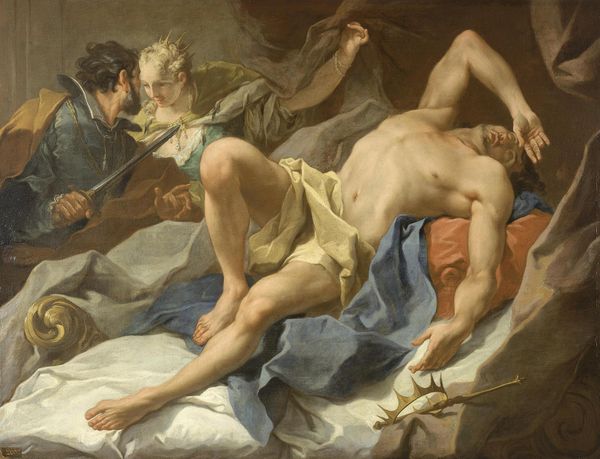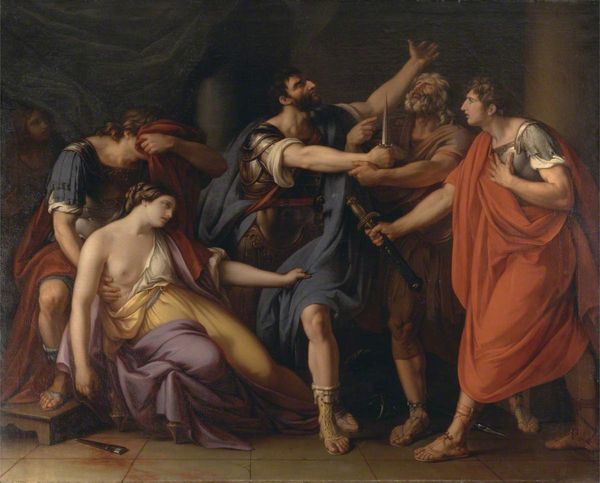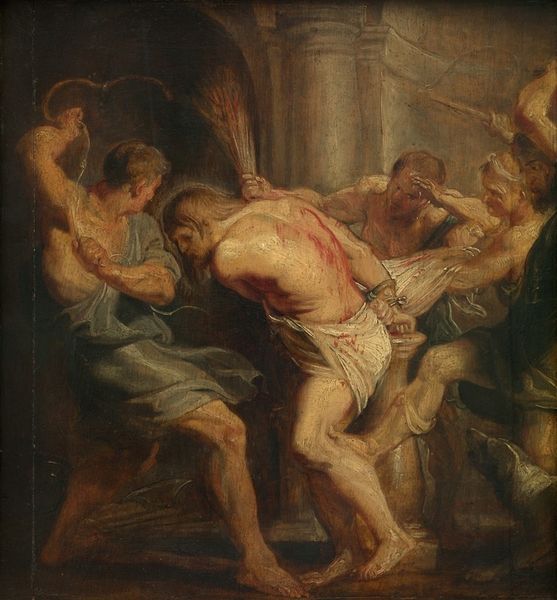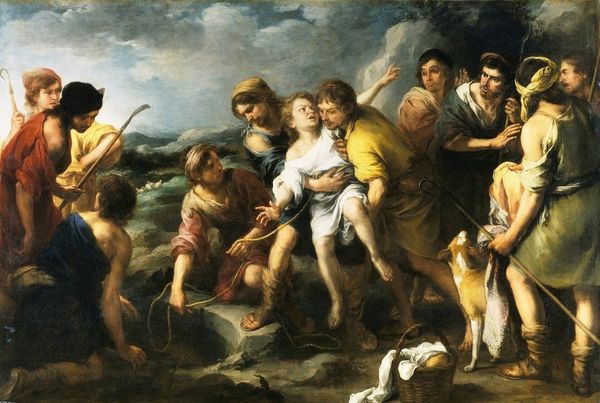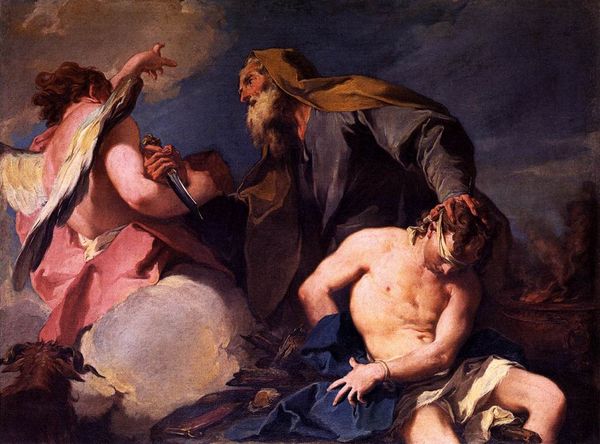
painting, oil-paint
#
baroque
#
painting
#
oil-paint
#
figuration
#
oil painting
#
history-painting
Copyright: Public Domain: Artvee
Editor: This painting is "Lamentation Over The Dead Christ," an oil on canvas by Anthony van Dyck. The figures around Christ's body are incredibly expressive, but the painting overall feels almost theatrical to me. How would you interpret this work? Curator: Indeed. It's powerful in its ability to convey grief. Van Dyck's use of archetypes is potent here, drawing from centuries of shared cultural memory around loss and sacrifice. Note the distinct symbolic language: the crown of thorns, the shroud. These are more than mere details; they are emotional triggers deeply embedded in our collective consciousness. The *putto*, a cherubic child, weeping alongside the adults also lends an unsettling pathos, reminding us of innocence lost. What does this visual combination evoke for you? Editor: The *putto*'s presence makes the scene more unsettling, almost raw. The painting almost blends together mythic and human experiences. The crown, normally an emblem of triumph, has become an instrument of torture. I think its power comes from presenting these potent symbols within the more tangible scene of grieving, creating that raw quality. Curator: Precisely. And Van Dyck understood how symbols act as cultural shorthand. The carefully arranged figures around Christ aren’t just mourners; they represent different facets of grief, allowing the viewer to project their own experiences onto the scene. It is an art which acknowledges that meaning shifts, dependent upon individual cultural and emotional context. Editor: So the symbols resonate differently for everyone? I guess that would change how people view this moment, and other historical events depicted in art. Curator: Yes, visual symbols act as conduits that transmit information about shared cultural heritage, religious faith, and traumatic memory. As viewers, our understanding of them is subject to the passage of time. Editor: Thank you. It's made me see the depth of these symbols and their role in shaping our understanding of art and our shared cultural past.
Comments
No comments
Be the first to comment and join the conversation on the ultimate creative platform.
